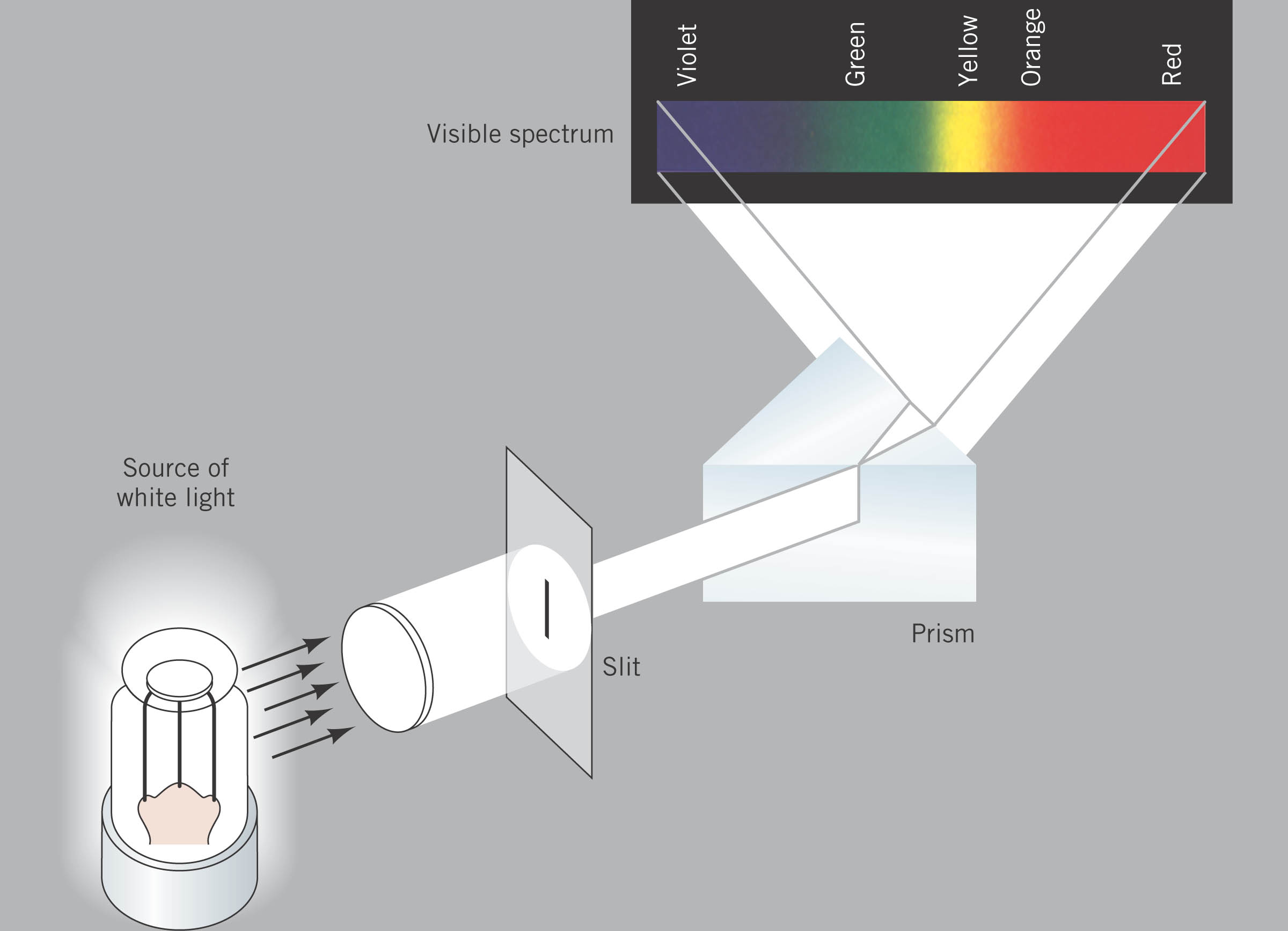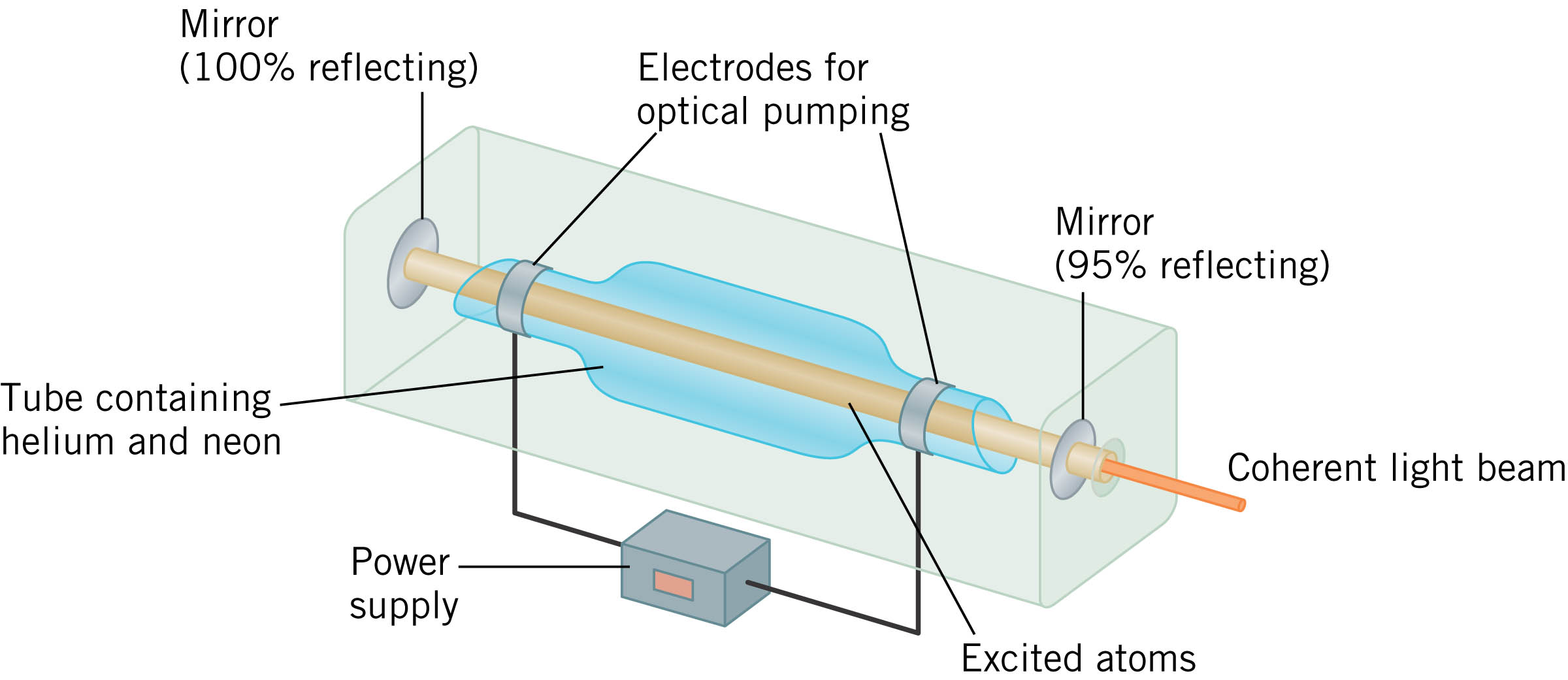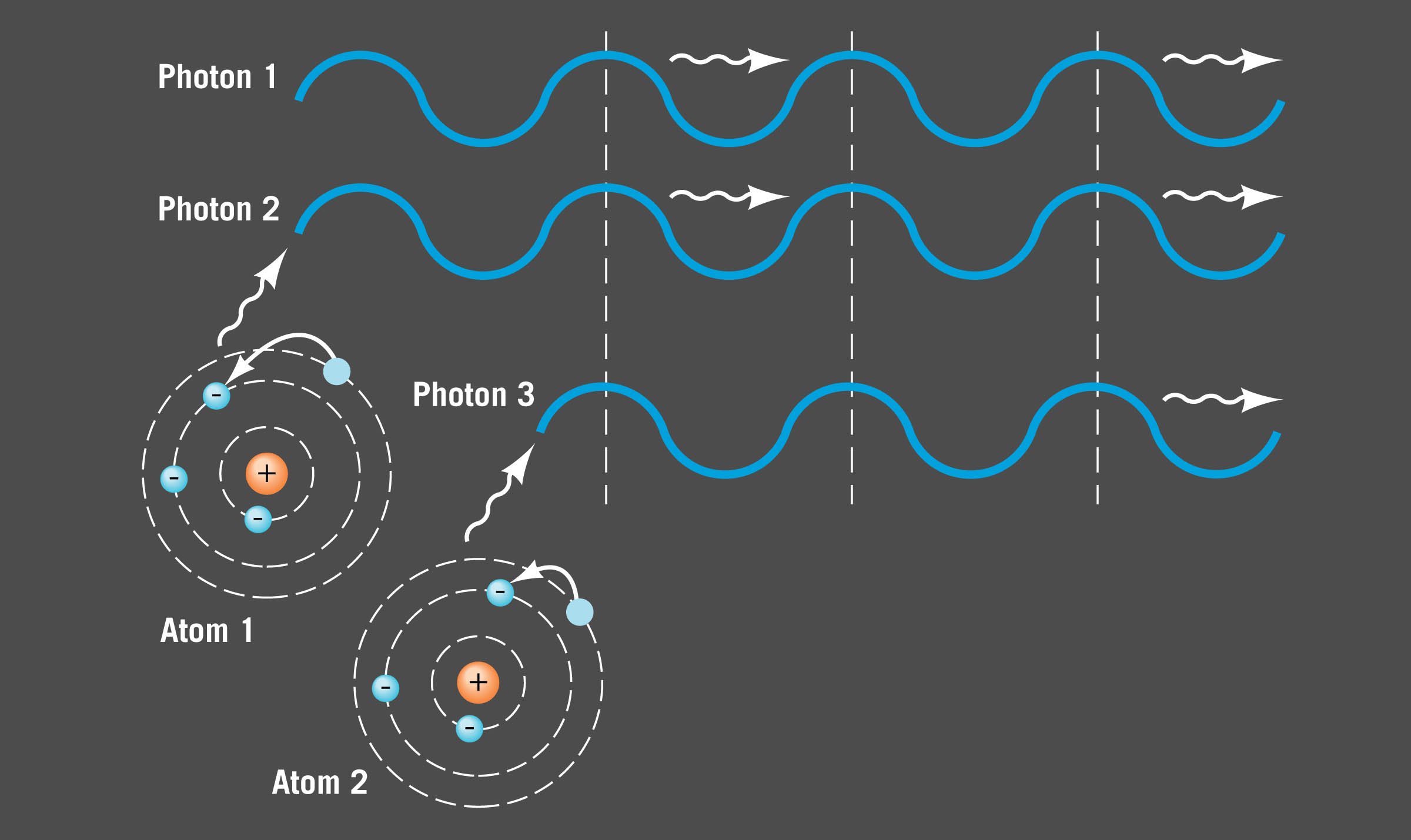
From Gary Stix article in Sept. 2001, Scientific American:
" After biomedical research and defense-fighting cancer and
building missile shields
still take precedence-nanotechnology has become the most highly
energized discipline in
science and technology. The field is a vast grab bag of stuffthat has
to do with creating tiny
things that sometimes just happen to be useful. It borrows liberally
from condensed-matter
physics, engineering, molecular biology and large swaths of chemistry.
Researchers who once called themselves materials scientists or organic
chemists have transmuted
into nanotechnologists.
Purist academic types
might prefer to describe themselves as mesoscale engineers.
But it's "nano" that generates the buzz."
NANOTECHNOLOGY is a word that is used to describe a plethera
of different
technological developments on a length scale of 100 nm or less (thus
the term nano).
It encompasses the fields of biology, chemistry, physics, and
engineering, as well as
medicine. We will focus on how physics and engineering have
changed -- what new
things can be done on a nanometer scale.
What is a nanometer? [Nanoscale circuit on bottom right]
Invitation to the Nano-World
Richard Feynman's 1959 lecture on the idea of manipulating and
controlling
things on a small scale.
<http://www.zyvex.com/nanotech/feynman.html>
This question seems to have erupted in Physics 101 classes across the nation! What good is nanotechnology? What will it be used for? Why should we care?
Since we are in a physics class, lets look at one aspect of
nanotechnology -- how circuits have changed and what nanotechnology has
to offer for our computers of the future.
Circuits have changed dramatically in the past 20 years. From
individual
components which were soldered onto a board to integrated circuits
which are
patterned with lithographic techniques. From integrated circuit
chips (IC chips) that
contained 134,000 transistors for a 12.5 MHz clock speed in 1982 to 1.2
million
transistors per chip and a 50 MHz speed in 1989 to 28 million
transistors in 1999 for
733 MHz clock speed on the Pentium 3 chip. This spring (2002),
Intel and IBM, SOny,
SCE, and Toshiba all reported their latest chips have reached the
nano-zone. The
spacing between components on their chips is under 100
nanometers.
New technologies
will need to emerge in order to support much more shrinkage. (see
websites below:
NIST, Circuit news) <http://www.nist.gov/public_affairs/licweb/shrinkchips.htm>
Cleaning up the environment using nanoparticles. Nanoparticles
are unique in that they have
large surface areas compared to their volume. This means that
they can be used in applications
where catching other materials on their surface is needed. For
instance, nanoparticles are used
for filters, for cleaning up your pants, and here they are being
explored to clean up toxic waste.
Nanoparticles are also being explored for use to store hydrogen for
alternate energy sources.
(see this short article: Technology
Review, Sept/Oct 2006, p. 49)
Atoms & Lasers -- Ch. 21
What's coming this semester -- Nanotechnology, optical
communications
-- all based on knowledge of the ATOM



Light's Wave Nature:
Light propagates from one place to another as a wave. It has wave
properties of diffraction,
interference, reflection, and refraction.
Wave Properties:
Wavelength, lambda
Frequency, f
Period, T
T = 1/f
Wavelength * Frequency = Speed of Wave
Speed of light, c
Interference of Waves: Two waves superimpose on each other.
The amplitudes at a given location are added to find the
resulting waveform. Amplitudes
above the equilibrium point are positive and those below the
equilibrium
point are negative.
Light's Particle Nature:
Planck was the physicist who derived the theoretical expression which
describes the intensity of light
given off as a function of wavelength for a given temperature black
body radiator. It was based on the
idea that each electron could only give off energy in discrete amounts
rather than any and all energies.
E = h f c = l f = 3 x 108 m /s
In order to describe spectra, scientists had to model the atom with
different energy levels so that light
could be absorbed or emitted in discrete amounts also. The
photons which interact with the atoms have
to have just the right amount of energy to get the electron to jump
from one orbital to another (or one
energy level to another) or the photons are not absorbed or
emitted. This idea came from Einstein
when he studied the photoelectric effect.

How does light act? Light travels from one place to
another as a wave; it interferes with itself, it diffracts going
through an aperture (small hole). It interacts with matter via
absorption and emission as a particle. It reflects off
of surfaces of materials, refracts (or bends) when it enters a material
with a different index of refraction (related to
density), and can be absorbed by the material. This is known as
wave- particle duality of light.
Laser -- Light Amplification by Stimulated
Emission of
Radiation

The recipe for a laser & Energy levels for Gain Medium - Clich here for the picture from lecture
Recipe:
1. Two mirrors are required. One with 100%
reflectivity and the other with less than 100%
reflectivity.
2. A gain medium -- a material which has an energy level
structure with an upper lasing level that is
long lived to make an inversion (more electrons in the upper
lasing level than the lower lasing level). This is the material
whose electrons are excited in order to make the amplification of the
light. These may be gases (argon, HeNe), solids (YAG),
semiconductors, or liquids (dye lasers).
3. Pump -- a mechanism for pumping electrons in the gain
medium up into the upper lasing level.
This may be done with a flashlamp, electrical current, or another
laser.
4. Spontaneous emission -- spontaneous emission occurs
when an electron in an excited state
jumps back down to a lower energy level giving off a photon. The
photon can go in any direction
and has no particular phase.
5. Spontaneous emission occurs in direction of the mirrors and is caught
between the mirrors --
bouncing back and forth from mirror to mirror, traveling through the
gain medium.
6. Stimulated emission -- stimulated emission occurs when
a photon "tickles" or interacts with an
electron in the upper lasing energy level, stimulating it to emit a
photon and jump to the lower lasing
level. The stimulated photon is emitted in the EXACT same
direction as the initial photon and with
the EXACT same phase. THEREFORE, the total wave (electric field)
that is traveling in the laser
cavity is now increased in amplitude (constructive interference).
7. We have Amplified the light going through the gain
medium when bunches of electrons make this
stimulated transition down to the lower lasing energy level.

Energy Levels for Gain Medium
The best energy level system is the FOUR level system.
The highest energy level has a short lifetime
(electrons will leave quickly from this state) and the
electrons are excited there by the pump.
The upper lasing energy level is the next lowest in
energy. Electrons quickly drop to the upper
lasing level from the highest level.
The upper lasing level has a long lifetime (electrons will stay
there awhile).
The lower lasing level has a short lifetime (electrons
drop to lowest energy level from here). We
don't want many electrons in the lower lasing level or else they could
absorb light from the cavity and
decrease the total amplitude of the laser light.
Thurs. Oct. 19th
Rebuilding the levees in New Orleans -- In class Discussion
What
are some of the issues brought out in the readings? List 5
Pick
an issue to
discuss within group:
What
is each
member’s point of view? List facts that
support
the viewpoint
What
other points
of view might there be? Why might
someone think this? What facts support
this viewpoint? List at least 2 other
viewpoints with explanations.
Prepare to present your case to
two other groups. Each group will have 10 minutes to present to
the larger group. Find more information to support your viewpoint
and be prepared to discuss the implications of the different views --
political, social, economic, ethical, etc.
The Levees in New Orleans --
READING ASSIGNMENT -- read all articles and look at all websites for
our in-class discussions.
General Reading (not for use as
main analysis article in written assignment)
WRITTEN ASSIGNMENT
DUE: Thurs. Oct. 19th
Short Written Assignment
[50 pts.
– 2 sections (a) analysis and (b) discussion]:
CHoose one article from the
In-Depth Selections for the ANALYSIS part of the assignment:
(a) Article Analysis: (25 points) The
first part of the assignment should contain a listing of answers to the
following questions: ( ~1 page long)
(b)
Article Discussion: (25 points)
The second part of the assignment should be a 11/2 page answer
to
the
following question. This should be about
4-500
words long.
Choose one of the issues
brought out in the article you read and use it (and at least one other
source) to answer the following question in more depth.
The Article Discussion page should follow good writing practices and contain an introduction, a serious discussion of the issue, and a conclusion.
How well it is written/proof read (5 pts extra credit)
Thurs. Oct. 12
Ch. 8 -- Energy
Main Ideas:
Work: Can be defined in a number of ways. It
is related to changing the state of
motion of an object, changing an objects position, and/or changing its
state of energy.
W = F d = DKE = DPE
F is force, d is distance, KE is kinetic energy, and PE is potential
energy. Applying a force over a distance can increase the
speed of an object or change its potential energy.
KE = 1/2 m v2
Is energy due to motion of an object. Any object in motion
will
exhibit KE. It is a
scalar quantity NOT a vector quantity.
PE = m g h
Is energy due to position above or below a reference height. PE can be negative ifPower = Work/Time
This describes how quickly you do the work. The quicker it is done the more power is required.
Conservation of Energy states that energy can neither be created nor
destroyed, it
simply changes states (or types of energy).
Conservation of Mechanical Energy states that a system that is
isolated can exhibit
conservation of mechanical energy. That is the total energy
of the system comes from the sum of PE and KE and as the system
evolves:
KE + PE = Constant.
In-Class Demonstrations and Calculations of W and
Conservation of Mechanical Energy.
Examples of Conservation of Energy:
(1) A 1 kg pendulum swings from a starting position of
50
cm above equilibrium. What is its speed at the bottom of its
swing?
(2) The same pendulum swings to 15 cm above equilibrium.
What is its speed there?
Mini Experiment
Bouncing
Balls & Roller
Coaster
Experiments
1. Bouncing Ball: Ball, meter stick
a. Choose a height to start from. hi =
b. Drop ball.
c. Record height ball returns to. hf =
d. Calculate the following quantities: PE before, PE after, Speed ball hits ground with.
e. Is mechanical energy conserved during fall? After return bounce? What happens to the energy of the ball?
f. Choose another height to start from. Then calculate how fast the ball is moving part of the way through the fall (for instance, drop ball from 75 cm and see how fast it is moving at 30 cm)
2. Roller Coaster Problem: Loop-de-loop, car or ball, meter stick
<>a. Make necessary measurements to calculate the following:PE at top, Speed of car/ball at bottom, Speed of car/ball at top of loop
CH. 8 Homework

CH. 6 -- Momentum


Information on the Neutrino Discovery and Recent
Experiments:
http://ppewww.ph.gla.ac.uk/~psoler/P1X_neutrino_2004_1.pdf
Other Neutrino News: http://www.physorg.com/news346.html
Main Equations:
Linear Momentum p = mv
Newton's Second Law F = (pf - pi) / t
Impulse F Dt = D(mv)
In order
to change an object's momentum, you must apply a force for a period of
time. If you increase the time, you can decrease
the necessary force.
Conservation of Linear Momentum p(before) = p(after)
Fermi Lab: <http://www.fnal.gov:80/>
Go see how conservation of momentum and
energy are used in real life!
Momentum
is a vector quantity defined as p = mv where p and v are
vectors.
Momentum
is a conserved quantity when there are no external forces
acting on a
system.
Elastic
Collisions are ones in which both momentum and kinetic energy
are
conserved.
MINI EXPERIMENT
Main Ideas:
Example problems on conservation of momentum -- group work
Experiment: Momentum Conservation
2 Carts on Track, Stop watches
Estimate the relative masses of the two cars (individually and with
masses on
one).
Draw a picture of the situation.
Calculate the speed of both cars through experimentation.
Use momentum conservation with the two carts' speeds to determine the relative masses of the two carts.
Thursday,
Sept. 14th
Ch. 4- Newton's Laws
F = ma F = D(mv)/Dt
In Class Work:
Define Newton's 3 Laws
Give examples of each as you would explain them to a middle schooler..
Focus in on Newton's Laws:
1. First and Second Law: The NET force is the important
quantity. If there is a NET
force, there is an acceleration. If there is NO NET force, there
is no acceleration; BUT there can still be motion (constant speed
in straight line).
2. Examples of Places where net force must be considered:
Falling objects and air resistance.
Pushing objects across a surface and friction force.
3. Third Law: Action and Reaction Pairs, Which forces
need to be largest to get an
object to accelerate in a particular direction.
Examples of Newton's Laws -- Net force and terminal velocity
Units of Force, Weight, Mass
Ch. 4 Homework
Qs
1,5,6,8,11,13,14,16,20,22,23,25
Ps 1-3,5,6,8
Thursday,
Sept. 14th
Ch. 3- Motion
Mini-experiment In Class
Equipment: Meter sticks & stop watches
Using the above tools and the people in your group. Measure
the
following quantities.
a) Average speed of a person walking at constant pace.
b) Average acceleration of person starting from stop to a run.
c) Your response time when dropping a ruler between fingers
Experimental Procedure: Describe below how you would do
the
above 3 measurements.
How many trials would you do? Why?
Data: Record data below and show calculations of speed,
acceleration, and response time.
Analysis: Are the values you calculated reasonable? why
or why
not?
What are possible sources of error?
Looking back would you change your experiment in any way?
How?
Key Concepts:
Projectile Motion:
Motion can be separated into its vertical and horizontal components.
Vertical
motion controlled by gravitational forces and any air resistance that
occurs.
An
object undergoing horizontal motion feels no unbalanced forces (once
thrown/shot
object is
released).
Equations of
motion can be chosen for each type of motion.
Vertical: dy = 1/2 a t2 Vfy = Viy ± at
Horizontal: dx = Vix t
When a ball is thrown up in the air, it experiences vertical motion.
When a ball is rolled across a table, it experiences horizontal motion.
When a ball is thrown across the room, it
experiences
BOTH vertical and
horizontal motion.
Galileo showed that we can look at each of the above motions separately.
Angles for projectile motion -- In class demo/ experiment --
What angle is the best to use for shooting a dart
gun
if one wants to have the dart travel the
farthest in the horizontal direction?
Ch. 3- Motion
Key Concepts:
Acceleration - average and due to gravity
Free fall and Air resistance -- Terminal velocity
Terminal Velocity -- Free fall and air resistanceWhat does each type of graph look like for the following
situations:
Constant Motion -- the distance increases with time (straight line with some slope, the steepness of the line is related to the speed), the speed stays the same regardless of time (straight horizontal line), the acceleration is zero
Acceleration -- The distance increases or decreases with time but the slope changes (as you speed up the slope increases, as you slow down the slope of the curve decreases) thus you see a curved line on distance graph, the speed incresases of decreases with time in a linear fashion (straight line with some slope corresponding to acceleration), the acceleration is a constant at all times (straight horizontal line (non-zero, may be positive or negative))
No Motion -- the distance remains the same regardles of time (straight horizontal liine), all other graphs are at zero (no speed and acceleration)
Changing Acceleration
-- all graphs are more complicated, distance changes with time
in a curved fashion and so does speed, accelearation is changing with
time (straight line at some angle)
Graphing of Scenerios
Ex. Dog runs ambles down street at constant pace, sees a cat and speeds
up
to chase it at a full run, cat ducks into doorway and dog must
decelerate to
a stop.
Ex. Hawk sitting in tree, sees a mouse, dives going faster and
faster to a high speed,
swoops across the field, grabs for mouse but misses,
flies dejectedly at a lower speed
to a fence post, lands on post feeling sorry for itself.
Identify types of motion in scenerio, make 3 qualitative graphs of
the
motion (d vs t, v vs t, and a vs t)
Ch. 1,2, & 3- Motion
Key Concepts:
Looking at graphs to determine trends and find information
Vectors vs. scalar quantities
Length associated with amount is a scalar, but is
part of a vector.
Direction completes the designation of the vector --
vector is a scalar quantity PLUS
direction
Addition of vectors graphically in 2-D and numerically in
1-D
Speed -- average and instantaneous
Distance
Velocity
Vector Quantities
Acceleration - average and due to gravity
Homework Ch. 3Tues. Aug. 22
& Thurs. Aug. 24, 2006
The US standing in science
-- see websites listed below